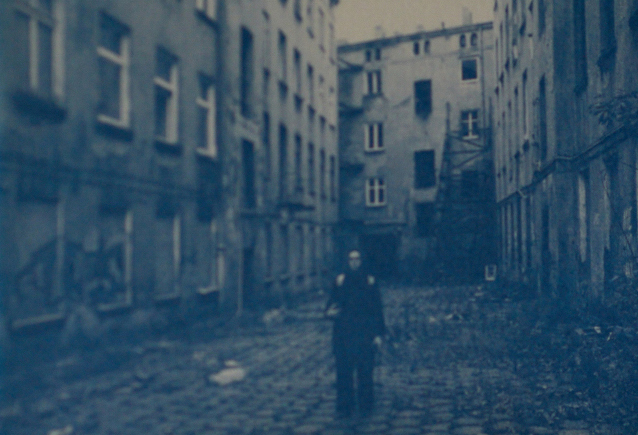Citrus \ Necropolis
Roi Kuper
2001
In the series Citrus, Kuper returned focuses on the photographing of deserted citrus groves and the disintegration and degeneration of the living body – the tree, the grove – that until recently was the absolute symbol of the Zionist dream of building the land and making it prosper by means of settlements and the economy. First he dealt with images of a single tree, the individual, that was in the past part of a flourishing and fruit-giving orchard, and now stands dying: its innards are empty, and all that is left is its external bark.
From the lone tree Kuper proceeds to describe a “living” grove, to open space and landscapes, which also seem in many cases a slow, continuous death – until the edge of the settlement can be seen. Shortly before the groves become real estate plots, quick money earners for contractors and businesses, Kuper captures on camera what was once seen as the jewel in the crown of working settlements in Israel. He shows in one swoop the “living” and the “dead”: the rotting fruit tree, that was until recently living, or the tree and grove deliberately neglected, to prepare the land for the building of villas, condominiums, road systems, malls, and the like. The artificial extinction, or the slow-natural one preceding uprooting – the felled branches, the dry leaves, the signs of poison – are sharpened by the towns, sparkling here and there in the background and approaching the groves. For Kuper it is also important to photograph groves that, although they have been recently planted, seem to him fictitious – he believes that in them is also the crash and burn of the Zionist concept, of the citrus grove symbolizing new life full of hope, as poetically described in Nahum Guttman’s Path of the Orange Peels. According to Kuper, the change in the way we relate to the groves in Israel is fundamental to a change in our world view and symbolizes complex processes of a distancing from the national collective ethos toward a pure individualism.
The orange, symbol of fertility and love, the “golden apple,” that sucks life from the sun; the fruit whose orange color symbolizes fire and creativity – has had its vitality taken from it in a reality of vulgar materialism. His memory of an independent and creative life in the old-new Hebrew land seems today a dull and immaterial memory, fading and forgotten.
- Copies: 1000
- Pages: 128
- Type of binding: hardcover
- Dimensions (cm): 24x20
- Type of printing: Offset
- Publication: Herzliya Museum of Contemporary Art
- Place of publication: Tel Aviv
- Supported by: Herzliya Museum of Contemporary Art
- Book photography: Yair Meyuhas















